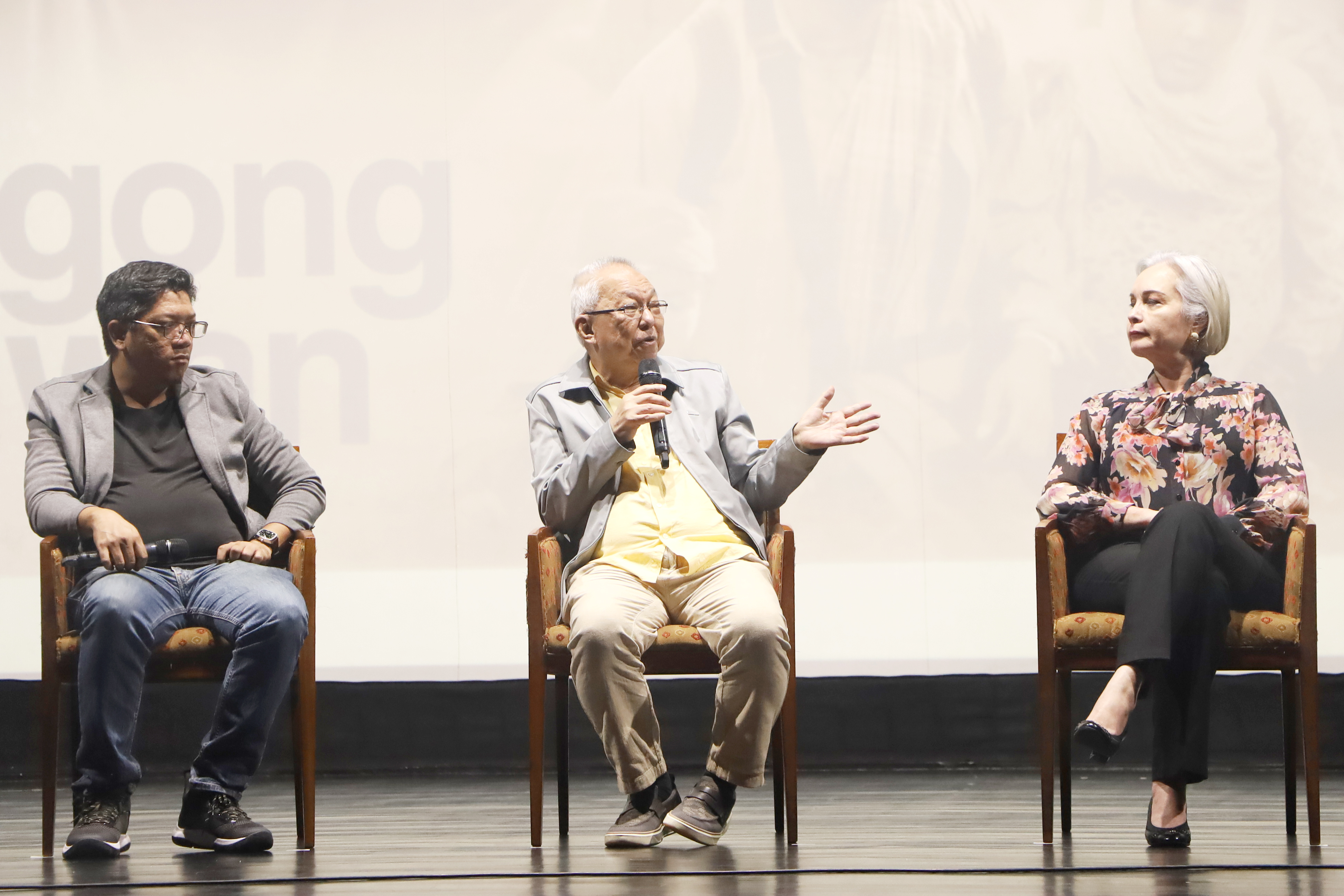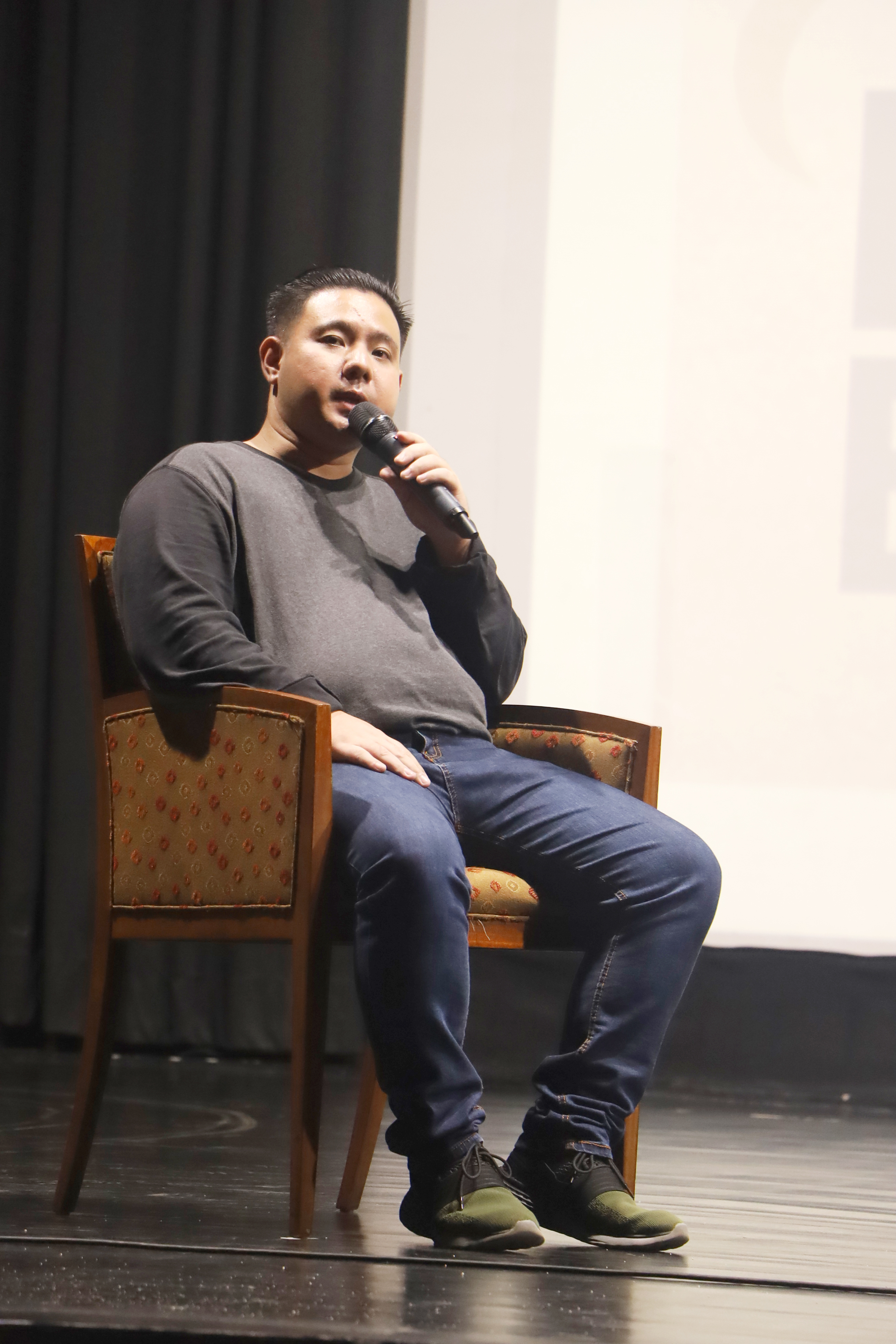Peace triumphs with honest filmmaking
CCP Cine Icons honors newly minted National Artist Marilou Diaz-Abaya by presenting the digitally restored version of her 2001 drama film Bagong Buwan
At A Glance
- 'Marilou is very passionate and she has excellent knowledge of the cause of the war. That was why she wanted to push through with this project. She wanted to pursue the truth.'

Christian Vallez reminisce about the making of Bagong Buwan and working with National Artist Marilou Diaz-Abaya
Films have long mirrored society. As a powerful method of storytelling, films illustrate the countless and timeless facets of human nature, made all the more vibrant with images and sound. The art of filmmaking transcends generations and continues to give life to different narratives, identities, and events.
Bagong Buwan is a testament to timeless filmmaking. Directed by National Artist for Film and Broadcast Arts Marilou Diaz-Abaya and written by National Artist for Film and Broadcast Arts Ricky Lee and Jun Lana, the digitally-restored version of the 2001 drama film premiered on the big screen once again during the fifth edition of the CCP Cine Icons on Oct. 6.
Starring Cesar Montano, Caridad Sanchez, Amy Austria, Jiro Manio, and Noni Buencamino, Diaz-Abaya’s Bagong Buwan is considered a cinematic masterpiece for its depiction of Filipino Muslim suffering during the war between the Philippine government and the Moro Islamic Liberation Front.
“It really was a culture of violence,” said Bagong Buwan producer Margie Moran-Floirendo during the talkback. “On our trip to Camp Abubakar, we arrived at a checkpoint where there was a little boy. He went in front of our vehicle holding a carved toy Armalite, pretending to shoot us.”
Moran-Floirendo, one of the founders of the Mindanao Commission on Women, believed, however, that Muslims and Christians can be civil. She spearheaded the building of 1,000 houses in Central Mindanao, where both cultural groups could live together in peace and harmony.
In attendance at the talkback was National Artist Ricky Lee, who wrote Bagong Buwan. His first time rewatching the film after 22 years, he was moved to tears seeing how Filipinos navigated the war casualties.
“Eye opener ang pelikula na ito sa akin. Growing up, ang tingin ko sa mga Moro ay violent. Kaya gusto namin ipakita sa tao na mga nanay din ito, mga tatay, kuya, anak. Hindi ito mga figures o bayolenteng tao, tao lang din sila (This film was an eye-opener for me. I grew up thinking of the Moro as violent. We wanted this film to show that the Moros were also mothers, fathers, brothers, children…They’re not necessarily violent, they’re just people),” said Lee.
With the objective to make Bagong Buwan mainstream so people can know the story, Lee also shares how the film was more than just a box-office hit. While it garnered 13 FAMAS awards and nominations, it was also highly regarded by the Muslim community, much to the delight of Diaz-Abaya.
Diaz-Abaya studied Islam for two years before starting Bagong Buwan. Labeled as receptive the challenge by Lee, the filmmaker was remembered for her dedication to remain true to the story and the craft.

Jiro Manio, who was only seven years old at the time of filming Bagong Buwan, also shared his experiences working with Diaz-Abaya. “Naging nanay ko talaga si Direk Marilou sa shooting namin. She was patient with me lalo na sa mga eksena na mabibigat, kasi natatakot ako during shooting (Direk Marilou was my mother on the set. She was patient with me, especially during the heavy scenes, because I would get really scared),” he said.
“Bagong Buwan is the culmination of women working for peace,” says Moran-Floirendo, who brought Diaz-Abaya to Mindanao. “Marilou is very passionate and she has excellent knowledge of the cause of the war. That was why she wanted to push through with this project. She wanted to pursue the truth.”
Having worked with Diaz-Abaya for years, Lee recalls planning to do double memoirs with the late filmmaker, weeks before her death. Through their recorded conversations, Lee emphasized how Diaz-Abaya would read his script as Ricky and not as Marilou. “She doesn’t impose herself,” he said. “She doesn’t exclude my ideas, even during disagreements.”
Cine Icons will be premiering Karnal, another film directed by Marilou Diaz-Abaya and written by Ricky Lee, on Nov. 24, also at the GSIS Theater.
The CCP Cine Icons is a special program that honors the country’s newly-minted National Artists. For its fifth edition, it paid tribute to one of the movers in the Second Golden Age of Philippine Cinema, Marilou Diaz-Abaya, who was re-interred at the Libingan ng mga Bayani on Oct. 8, 2023.